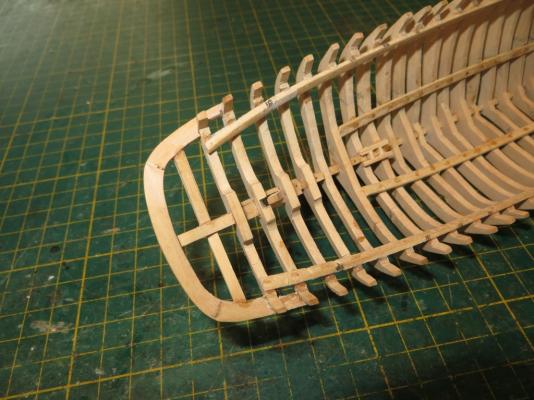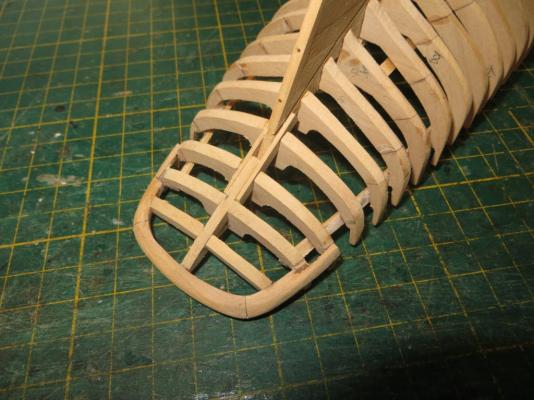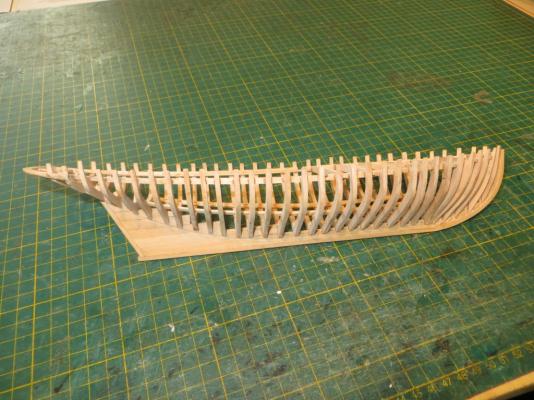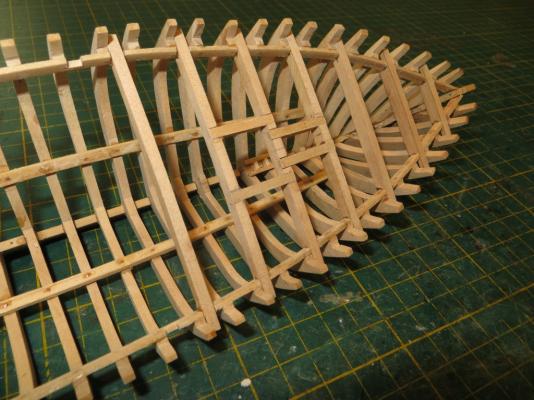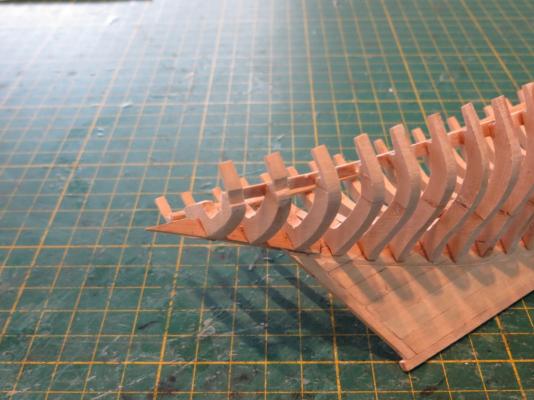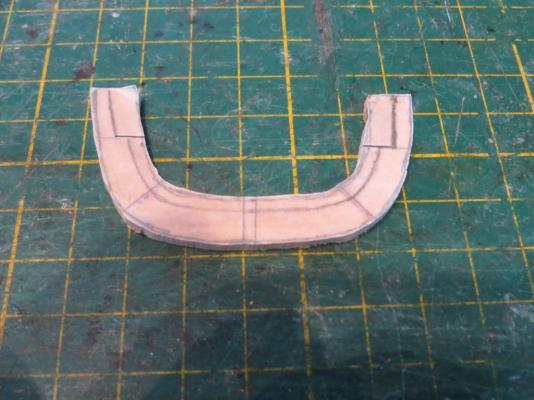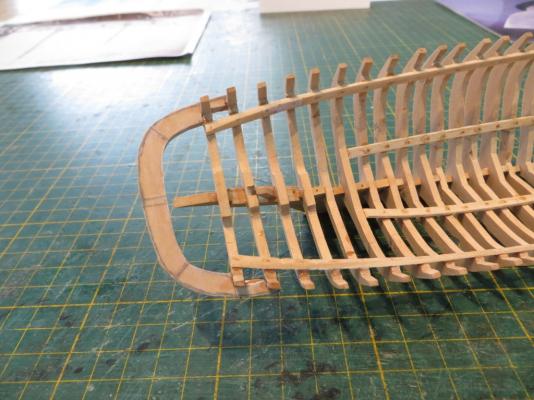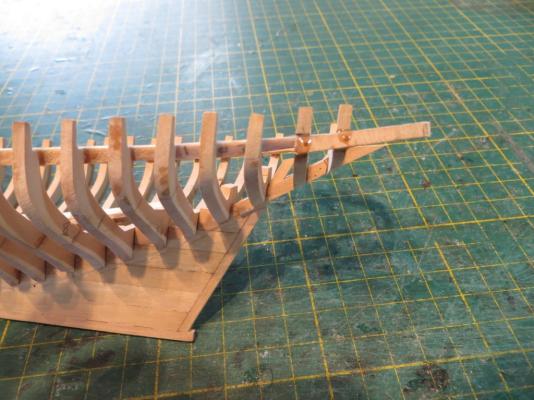-
Posts
9,461 -
Joined
-
Last visited
Content Type
Profiles
Forums
Gallery
Events
Everything posted by Jim Lad
-

Long handled surgical scissors
Jim Lad replied to RGL's topic in Modeling tools and Workshop Equipment
Greg, if you're looking for surgical tools, try a veterinarian site instead of searching 'surgical'. They're sometimes much cheaper. John -
Again, thanks for the encouragement, fellas! John
- 745 replies
-
- francis pritt
- mission ship
-
(and 1 more)
Tagged with:
-
Now that looks an interesting project, Chuck. John
- 1,051 replies
-
- cheerful
- Syren Ship Model Company
-
(and 1 more)
Tagged with:
-
Thanks for the encouragement folks - both here and via the 'Like' button. The hull will be fully planked. If I were going to leave a section open to view then I'd complete all internal details. I just like building by this method! John
- 745 replies
-
- francis pritt
- mission ship
-
(and 1 more)
Tagged with:
-
A bit of extra time at the museum of late has allowed me to get ahead with the Pritt. The counter rim frame is now roughed in and will stay like this until after hull planking, at which time I'll finish fairing it in properly. I've also made a start on the deck beams. Once these are completed I can start to think about planking the hull. John
- 745 replies
-
- francis pritt
- mission ship
-
(and 1 more)
Tagged with:
-
First class work on that crane, Kees. I can't wait to see the finished bath sponge. John
-

SS Vinal Haven by TBlack - FINISHED
Jim Lad replied to TBlack's topic in - Build logs for subjects built 1851 - 1900
First class, Tom! Great to see her in her final home. John- 326 replies
-
- vinal haven
- steam ship
-
(and 1 more)
Tagged with:
-
Thanks, all! Mobbsie - If you have a decent size Privet then how about turning it into lovely timber for your own next build? Mark - I haven't seen Jack's log. The only place I can find it is in the National Library, but it sounds interesting. Bob - As I mentioned, I suspect that the 'counter rim frame' is a piece of pearling lugger technology Popeye - Yep, still a knee to be fitted there when the counter frame is finally shaped. John
- 745 replies
-
- francis pritt
- mission ship
-
(and 1 more)
Tagged with:
-
Thanks for the comments, fellas. Not sure what I'll be doing with the finish as yet, Mobbsie, but I'll be using Privet for both hull and deck planking. John
- 745 replies
-
- francis pritt
- mission ship
-
(and 1 more)
Tagged with:
-
I didn't update my log after my last regular visit to the museum as when I got there I found that I'd forgotten to pack the wood I needed to continue building! I therefore spent most of the day talking to visitors and having cups of coffee in the members lounge! On Friday I had some extra time at the museum desk so was able to do a bit of work on the 'counter rim frame' - pearling lugger jargon. This is the frame that runs around the counter at deck level and onto which both the hull and deck planking butts. Because it is fitted into the aftermost frames at deck level, fitting it is largely a case of 'suck it and see' (or trial and error). So the roughed out frame is now glued and dowelled to the two aftermost frames ready for shaping. By the time I'm at the museum next Wednesday the glue will be nicely cured and ready to work on. The photos are, I think, pretty self explanatory. The final one shows the typical kicked up stern of the Thursday Island luggers. John
- 745 replies
-
- francis pritt
- mission ship
-
(and 1 more)
Tagged with:
-

Rigging Tension-how do you do it?
Jim Lad replied to capnharv2's topic in Masting, rigging and sails
I don't do anything scientific, Harvey - just my own judgement. John -
Rick, I use Selleys Aquadhere and Five Minute Araldite. As for blades, you might want to consider using scalpel blades instead - you'll probably find that they're better quality and last longer. The two that I find most useful are No. 11 (fine straight blade) and No. 21 (heavier curved blade). But remember - buy them from a vet or chiropody supplier, not from a surgical supplier - much cheaper for the same thing. John
-
Hey, Mobbsie, how did I miss your update from Wednesday - looking good, mate! John
- 1,279 replies
-
- agamemnon
- caldercraft
-
(and 1 more)
Tagged with:
About us
Modelshipworld - Advancing Ship Modeling through Research
SSL Secured
Your security is important for us so this Website is SSL-Secured
NRG Mailing Address
Nautical Research Guild
237 South Lincoln Street
Westmont IL, 60559-1917
Model Ship World ® and the MSW logo are Registered Trademarks, and belong to the Nautical Research Guild (United States Patent and Trademark Office: No. 6,929,264 & No. 6,929,274, registered Dec. 20, 2022)
Helpful Links
About the NRG
If you enjoy building ship models that are historically accurate as well as beautiful, then The Nautical Research Guild (NRG) is just right for you.
The Guild is a non-profit educational organization whose mission is to “Advance Ship Modeling Through Research”. We provide support to our members in their efforts to raise the quality of their model ships.
The Nautical Research Guild has published our world-renowned quarterly magazine, The Nautical Research Journal, since 1955. The pages of the Journal are full of articles by accomplished ship modelers who show you how they create those exquisite details on their models, and by maritime historians who show you the correct details to build. The Journal is available in both print and digital editions. Go to the NRG web site (www.thenrg.org) to download a complimentary digital copy of the Journal. The NRG also publishes plan sets, books and compilations of back issues of the Journal and the former Ships in Scale and Model Ship Builder magazines.



